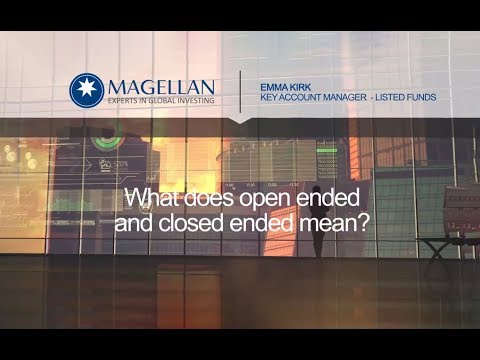Contents
This shows the extent of the importance of liquidity in the company. As a result, the company is able to pay $ 0.78 for 1$ of current liability. This increase in quick ratio uplifts the confidence of the investors. The term liquidity refers to how easily an asset can be converted into cash. Having liquidity features in an asset is of utmost importance for few organizations . Once you get your largest debt paid off, you can quickly add to your liquid assets.
A resource that holds an economic value for an individual, corporation, or even the government and is expected to provide future economic benefits to the holder. Finally, the sum total of liabilities is subtracted from the total value of assets to obtain the net worth. Precious metals are metals that are scarce and have a high economic worth for a variety of reasons – scarcity, usage in industrial operations, hedge against currency inflation, etc.
On the other hand, cash equivalents are low-risk and low-maturity investment instruments that can easily be converted into cash quickly. Money market instruments like commercial paper can be classified as cash equivalents. Examples of financial assets include cash, stocks, bonds, and marketable securities owned by the individual or the organization.
They are held by individuals who have liquid assets, such as cash in the bank or investment vehicles such as mutual funds. Land, real estate investments, equipment, and machinery are just a few examples of difficult-to-sell assets. Numerous long-term, non-liquid assets must be depreciated since their value diminishes over time and they cannot be sold immediately for cash. Thestock marketis an example of a liquid market because of its large number of buyers and sellers which results in easy conversion to cash. Because stocks can be sold using electronic markets for full market prices on demand, publicly listed equity securities are liquid assets. Liquidity can vary by security, however, based on market capitalization and average share volume transactions.
Businesses record liquid assets in the current assets portion of their balance sheet. These investments are held for 4 years, but this does not mean these are not liquid assets. The market rates are specific to the demand for investments in the open market. Therefore, the individual can any time encash these investments to earn profits.
It’s important for businesses to have a combination of liquid and non-liquid assets. Since you can convert these types of assets relatively quickly, it’s usually viewed as similar to cash. In many cases liquid assets are also referred to as cash equivalents because you can easily exchange them for cash whenever you want. Lawful type of money is cash that can be used to pay off debts. Cash equivalents and marketable securities are investments that can be readily changed to cash, frequently on the open market. Accounts receivable and inventories are examples of current assets.
Liquid Assets vs Fixed Assets
Not every asset you own can be categorized as a liquid asset — some will be non-liquid assets, also called illiquid assets. In general, non-liquid assets can’t be quickly converted to cash like liquid assets can be without losing value. While non-liquid assets can be sold, they can depreciate in value if sold too soon.

Both individuals and businesses deal with liquid and non-liquid markets. In some situations, inventory may be considered a liquid asset if it has a large market with highly visible marketplaces for a product in https://1investing.in/ high demand. Consider the latest iPhone; any models being recorded as inventory may quickly be demanded by the market. The company is able to sell the huge quantum of units only because of its credit policy.
The returns are calculated by dividing the return amount ($) by the invested amount in the above table. Property, plant, and equipment (PP&E) are long-term assets vital to business operations and not easily converted into cash. A liquid asset is an asset that can easily be converted into cash within a short amount of time. Such assets can readily be converted into cash whenever any financial emergency arises. This category cannot be ignored for individual personal finance also.
A liquid asset is either available cash or an instrument that has the capacity to be easily converted to cash. While evaluating investments and considering one’s complete financial condition, liquidity might be key. Essentially, liquidity is considered any firm’s ability to convert any given asset into cash easily. Further, it is even liquid asset examples the capability to purchase or trade any security leaving the asset’s price unaffected. Every individual or business needs to have adequate liquid assets for the diligent and smooth functioning of activities and peace of mind. Adequacy is also vital for taking advantage of unforeseen opportunities that may appear worth exploring.
Furthermore, how much amount should be invested depends on the investor’s lifestyle, take-home salary or income, and existing portfolio. Liquid assets are those in finance that can be immediately converted to cash, such as cash on hand or cash in a bank account. Due to the fact that cash is legal tender, it is the most liquid form of money. You can swiftly and simply obtain cash in exchange for your possessions if you use a transaction exchange.
She graduated with a bachelor’s degree from Florida Atlantic University and currently lives in South Florida. Exchange-traded funds are passive investment vehicles that mirror the underlying index in exact proportions. The fund manager doesn’t have to manage the portfolio actively. ETFs have no intention of outperforming their respective indices.
What is Liquid Asset?
Yes, gold is considered to be a liquid asset as it can be easily converted to cash. Due to high demand and a greater number of buyers available at any time, gold is a liquid asset. By and large, the more liquid an asset is, the faster it can be converted to cash.

Cash equivalents are other asset holding that may be treated similar as cash due to their low risk and short-term duration. Examples of cash equivalents include Treasury bills, Treasury notes, commercial paper, certificates of deposit , or money market funds. Note that some items may have less liquidity based on terms of the vehicle. For example, some CDs can not be broken or require a substantial penalty for early termination. A liquid asset is cash on hand or an asset that can be easily converted to cash. In terms of liquidity, cash is supreme since cash as legal tender is the ultimate goal.
These include white papers, government data, original reporting, and interviews with industry experts. We also reference original research from other reputable publishers where appropriate. You can learn more about the standards we follow in producing accurate, unbiased content in oureditorial policy. Promissory NotesA promissory note is defined as a debt instrument in which the issuer of the note promises to pay a specified amount to a party on a particular date. Currency MarketFor those wishing to invest in currencies, the currency market is a one-stop solution. In the currency market different currencies are bought and sold by participants operating in various jurisdictions across the world.
While high in cash value, illiquid assets are often expensive, too, making them difficult to sell and convert into cash. Liquid assets are those that can be converted into cash quickly and easily. Illiquid assets can be converted into cash, but it’s more difficult to do so.
What Is a Liquid Asset?
Your liabilities are anything that you owe, like credit card bills or business loans. This formula assesses how quickly a liquid asset can become cash and cover your current debts without relying on money from future sales or transactions. From there, you can work on acquiring other types of liquid assets such as certificates of deposit, mutual funds and marketable securities. This is the amount of money you would receive if you sold all of your assets. Furthermore, liquid net worth comprises only assets that can be sold.
- Due to high demand and a greater number of buyers available at any time, gold is a liquid asset.
- As mentioned, liquid assets are those that are easily converted into cash.
- You’ll know based on a quick glance at a balance sheet whether you can pay off debt obligations when they come due.
- To measure how well a company will meet its short-term debt obligations, a company should be mindful of its liquid assets.
- Past performance is not necessarily indicative of future results.
In theory, gold and silver should be as liquid as cash, because the metals trade on exchanges, much like stocks. And indeed, securities tied to the metals do trade freely, like other commodities, with value determined by what’s known as the spot price. But the physical metals themselves trade hands less frequently.
Liquid Asset Examples
Learn about the different types, plus how to calculate and grow an asset’s value. “Current assets – Prepaid expenses – Inventory” is the correct formula. Of these assets generally does not reflect what they are worth. Beneficiary – A person named in a will or trust as the intended recipient of assets or property. Dori ZinnDori Zinn has been covering personal finance for nearly a decade. Her writing has appeared in Wirecutter, Quartz, Bankrate, Credit Karma, Huffington Post and other publications.
Stay informed on the most impactful business and financial news with analysis from our team
In fact, non-liquid assets can take several months to convert into tangible cash. Institutions such as banks, non-banking lenders, and other investment funds have to have a fixed amount of liquid assets either or regulatory terms or management guidelines. In contrast to liquid assets, non-liquid—also called illiquid or fixed—assets, can’t be converted into cash quickly. Depending on the asset, a sale can take months or even years to complete.
Furthermore, in adverse business conditions like recession or sudden fall in demand in the market, liquid assets are essential to help the company to survive and sail through. In the context of businesses, a term of about three months or 90 days is generally considered for recognizing and classifying assets as liquid assets. In other words, assets that can be converted to cash or equivalent within 90 days are called liquid assets. The most common examples of non-liquid assets are equipment, real estate, vehicles, art, and collectibles. Ownership in non-publicly traded businesses could also be considered non-liquid.
